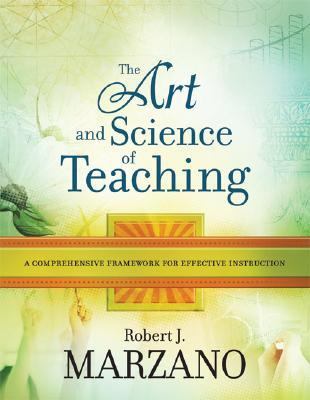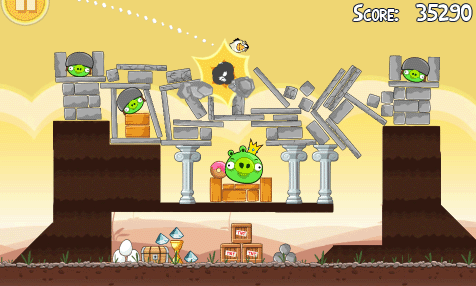That tilte is very alliterative. I just needed thesaurus.com a new word for engagement that starts with the letter "S." I didn't like any of the options...
Our district is investigating The Art and Science of Teaching by Robert Marzano (@robertjmarzano). This is a review of Chapter 5.

As an aside. I love this book. I love it because it explains reasonings for doing each of the strategies below. The science behind the strategy is sound but keep in mind that each piece of this puzzle has to work within your teaching personality and processes. Doing every one of these strategies is not for everyone, in fact to some of us it just seems crazy to think about trying something like that. Do what works for you, do what works for your kids, but NEVER be afraid to try some thing new!
From the "WELL-DUH" office:
- If you can increase student engagement, student learning and performance increases.
Simple Strategies for increasing student engagement:
- Take Brain Breaks! You can only focused for so long. Sometimes just a change in elevation and surroundings elicit new responses and reactions.
- Increase the physical activity of the room. If you are doing a worksheet and you are committed to doing a worksheet. Have students move from station to station completing the worksheet one at a time. Any increase in physical activity in your room will increase engagement. My favorite activity I ever did was when a group of my 6th graders acted out a skit to music on the water cycle. No words were used just music and gestures. It was the most memorable and fun activity ever!
- Set a good pace. Just like a race on the track setting a pace will allow you to meet your goals. Pacing is key to the classroom. A quick, urgent but not too fast pace keeps the room upbeat and lively. Use music with a certain BPM can aid in keeping a solid pace.
- Use games and puzzles. Sure you could change your entire curriculum into a game but you can also just take your curriculum, your essential learning and turn it into a puzzle we in the class are trying to solve. For example a science lesson may ask for students to be able to determine lights behavior when it strikes objects that are transparent, translucent and opaque. I might change that to make it a puzzle by saying: Students will be able to determine __________ behavior when it ____________ objects that are _________, ___________, or _________. Throughout the class we can begin filling in the blank and solving the puzzle. By the way, actual games are fun too. I once made a taboo and a pictionary game out of our vocabulary words and concepts from out chapter, I've never had so much fun in my life. Everybody does Jeopardy, I wanted to be different... I also centered my entire Force and Motion curriculum around the game Angry Birds.
- MILD Pressure is good. Using games and activities in the classroom elicit students engagement because there is a deadline, a competition, a healthy rivalry. Use these as motivating factors but NEVER put too much pressure that a student shuts down or becomes embarrassed.
- Wait time is key. I watch a master teacher (my assessment of them) and when she would ask a question she would raise her arm. While her arm was raised this was the time for students to think. When her hand dropped she then would accept student responses or student raising their hand. What I liked about this is it eliminated those slower to process the question and allowed every student the opportunity to think. I am also a fan of the popsicle stick method with student names on them in a cup. Making sure student never know when they will be called on ensures every student is engaged.
- Choral response is great for BIG ideas and main concepts. I love asking everyone to repeat a word or phrase. That allows every student to know this is a BIG idea.
- Controversy can be fun. When you curriculum is centered around a BIG idea or Essential understanding what is exciting to see every student look at that concept from a different angle. Host a friendly debate on the importance of various aspects of the BIG idea and encourage some dissonance around the issue. This will encourage kids to debate and discuss and really investigate their personal beliefs and bias around an issue. Everyone uses the example of global warming. What about war in our social studies curriculum?
- Provide usual information about your concept. When you have little tips, tricks and fun things it makes your curriculum memorable. For example My light and sound unit I taught in 6th grade was relatively boring at first. Every day at the end as part of my wrap up activity I left them with an optical illusion. This was something that made the day memorable and got them thinking and talking about science.
(do you see the old or young lady?)
- Love and care about kids (not in the chapter I added it!). I know it's odd to say Love but I'm not talking about romantic love, I mean that you arte compassionate, caring, open and honest with every student in your room. They see you not only as their teacher but a real person that learns, makes mistakes, is fallible and true to them. Caring and compassion are keys to a successful classroom engagement.





Good content.
ReplyDeleteProofread your blog.
Third line of simple strategies:
"If you are doping a worksheet..."
Love this! You've compiled a great list of the things we ALL need to keep in mind when we are teaching and learning.
ReplyDeleteThanks,Chris!
I especially like the technique of raising your hand to indicate thinking time and no students' hands should be raised during this time. I am interested in reading the rest of the book or at least your review of the chapters. Thanks.
ReplyDeleteI also agree you should proofread your blog. There are 4 errors in the OPENING sentence and that is a turn off to teachers. "That tilte is very alliterative. I just neege to thesaurus.com a new work for enegagement that starts with the letter "S." I didn't like any of the options..."